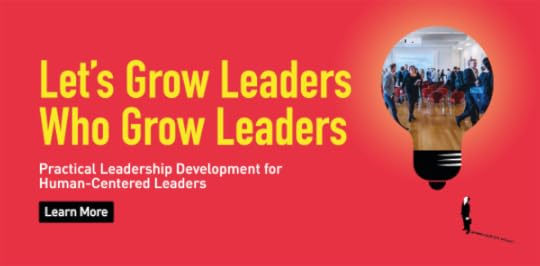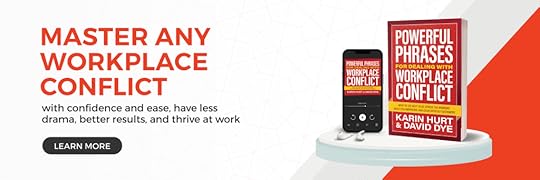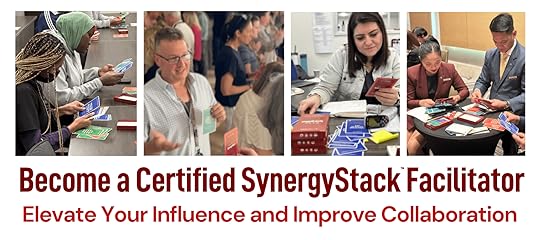David Dye's Blog, page 6
June 4, 2025
The Power of a Good Apology at Work: The Surprisingly Strong Habit That Builds Trust
Nobody enjoys messing up. But you know what makes it worse? That uncomfortable stretch of silence when someone misses the mark and refuses to acknowledge it. If you’ve ever wondered when or how to apologize at work, the answer is: probably sooner than you think. A well-timed, sincere apology doesn’t weaken your credibility—it strengthens your relationships, fast-tracks trust, and keeps collaboration moving forward.
And that brings us to one of the often underused habits for team connection and trust:
Connection Habit: Apologize Readily
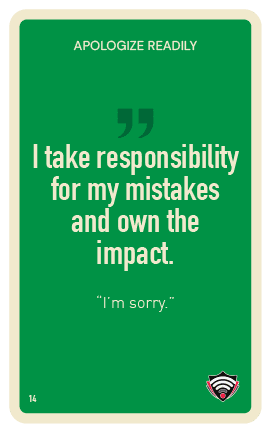 Because owning it builds more trust than dodging it ever will.
Because owning it builds more trust than dodging it ever will.
Apologizing at work isn’t about groveling. It’s about accountability. Integrity. Connection.
In fact, a timely, sincere apology signals three things loud and clear:
You’re self-aware (no one’s perfect, but you noticed and owned it).
You care about the relationship, not just the results.
You’re safe to work with—because you’re not afraid to admit when you’ve messed up.
Teams that apologize readily recover faster, collaborate better, and waste less energy tiptoeing around each other’s egos.
Trust doesn’t require perfection. But it does require repair.
Why Apologizing at Work is HardApologizing at work can feel…vulnerable. Especially when your inner voice pipes up with:
“But I didn’t mean to hurt anyone!”
“They’re overreacting.”
“This wasn’t entirely my fault!”
But this habit isn’t about your intent. It’s about your impact.
If someone felt hurt, dismissed, or confused, the best next step usually isn’t a defense—it’s empathy. And that starts with a clear, grounded:
How to Apologize at Work (Without Over-Apologizing or Under-Owning)“I’m sorry.”
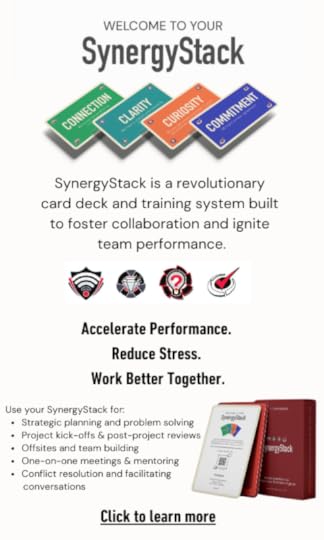
Here’s how to practice this habit in a grounded, confident way:
Say the phrase clearly. “I’m sorry.” Not “I’m sorry if you were upset.” (That’s a dodge in disguise.)Name the impact. “I’m sorry I interrupted you in the meeting—it cut off an important point.”Avoid the “but.” It cancels everything before it.Don’t over-apologize. You’re not broken. You’re just being real.Follow through. When possible, ask: “What would help make this right?”Learn about words that weaken your credibility such as pre-apologies.
Other Phrases That Reinforce Ownership“That didn’t come across the way I intended, and I can see the impact.”“I missed that. You’re right.”“I want to take responsibility for my part.”“Thanks for pointing that out—I see it now.”“I hear you, and I’m sorry for how that landed.”Three Mini-Personal Experiments to Build the HabitOwn It Fast Challenge: For 30 days, when you notice you’ve messed up—even in small ways—practice apologizing within 24 hours. No delay. No drama. Just honest, direct repair.Impact Reflection: At the end of each workday, ask yourself: “Did I cause any friction or confusion today I haven’t acknowledged?” If yes, close the loop tomorrow—with a quick, sincere apology.Watch the “But.” For two weeks, catch yourself anytime you start to say, “I’m sorry, but…” Pause. Rephrase. Let the apology stand on its own.The best leaders aren’t perfect. They’re responsive. They don’t avoid missteps—they address them. A sincere apology doesn’t weaken your credibility. It strengthens it.
And it begins with two simple, courageous words:
“I’m sorry.”
Ready to build a team that owns mistakes, recovers fast, and collaborates like pros?
Discover how the SynergyStack™ Team Development System helps your team build habits that stick—like apologizing readily and communicating with confidence.
👉 Explore SynergyStack
The post The Power of a Good Apology at Work: The Surprisingly Strong Habit That Builds Trust appeared first on Let's Grow Leaders.
FInd the Fun at Work: How Smart Leaders Prioritize Play During Tough Times
What It Is, Why It Matters, and How to Bring It to Life This Week
We’ve all been on that team where everything feels… heavy. The deadlines are looming, the to-do list is growing, and the energy? Flat.. But here’s the good news: you can find the fun at work and get the results you need.
That’s the spirit behind Find the Fun—the habit of bringing levity, energy, and even a little play into your process. Not because the work doesn’t matter. But because it matters so much that you want people to have the energy to do it well.
And it all starts with one magic question:
“What if we gamified this?”
Yes. A dash of play can turn a task into a challenge, a meeting into a mission, and a slog into something worth high-fiving about.
What It Means to “Find the Fun” at WorkThis habit is about finding opportunities to inject joy into the work, not as a distraction, but as a catalyst. You look for ways to energize the team, celebrate progress, and keep spirits high… even when the work is tough.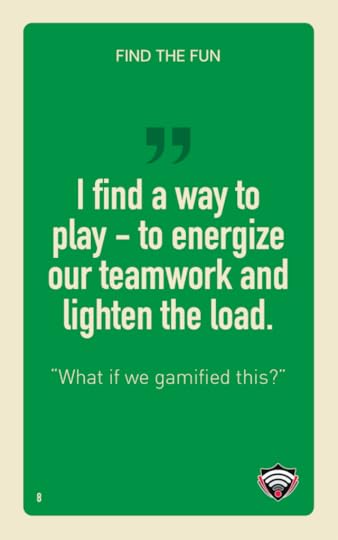
You’re not ignoring the challenge. You’re reframing it. You’re saying, “What if this could feel just a little more human, a little more fun?”
Why Play at Work MattersFun isn’t fluff—it’s fuel. When you bring lightness to the process:
People feel more motivated and less drained.Collaboration gets smoother—because laughter is the fastest trust-builder on the planet.Creativity improves. When you loosen the tension, the ideas start to flow.And you reduce burnout. Because a moment of joy can carry a team a long way.Momentum loves a little mischief.
Why It’s So Hard to Find the FunThere’s a myth in many workplaces that serious work needs to look serious. That if you’re having fun, you’re not working hard enough. (Spoiler: that mindset is how you get burnout and bad decisions.)
Injecting fun can feel risky—especially if your team is stressed, overwhelmed, or stuck in spreadsheet mode. But that’s exactly when it’s needed most.
You’re not trying to be the class clown. You’re the energy architect. The one who asks, “What if this didn’t feel so hard?” And then helps build a better way.
How to Make Work a Game (Even if You’re Not “The Fun One”)Here are five low-risk ways to bring this habit to life:
Say the phrase. When the team feels stuck, just toss it in: “What if we gamified this?” Even if you don’t have a full plan, it gets people thinking differently.Add small wins. Celebrate every milestone. Stickers, GIFs, inside jokes—whatever works for your team.Create a scoreboard. Progress becomes exciting when it’s visible. Bonus points for friendly competition.Let people name the challenge. “Operation Inbox Zero” or “Sprint & Snack” makes the work feel like a mission, not a burden.Use themes or alter egos. Pirate Day. Spreadsheet Bingo. Task Roulette. A little ridiculousness goes a long way.Or hold a confidence burst day.
Other Phrases to Spark Fun and Energy“What’s a ridiculous prize we could give ourselves if we finish this?”“How do we make this just 10% more fun?”“What would this look like if we were doing it on a game show?”“What would the ‘best team ever’ do right now?”“Can we race the clock just for fun?”Three Fun-Finding Mini-Experiments to Try This MonthOne of our favorite ways to end a highly interactive keynote is to have every audience member craft a mini-personal experiment (something that is easy to do, feels a little scary, ahas measurable outcomes. So if you’re looking to find more fun at work, why not try one of these mini-personal experiment (more on how to set up a mini-personal experiment here).
Gamify One Task: Pick a routine team task and say, “What if we gamified this?” Try a point system, a timer, a prize, or even a silly title for the winner. Notice the energy shift.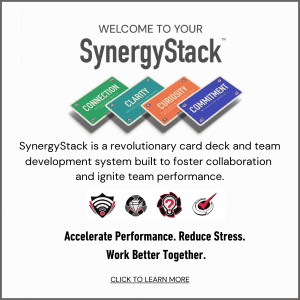 Name Your Sprints: Give the next three team projects creative names. See how it changes your team’s mindset—and their memory of the work.Win of the Week: Add a fun five-minute segment to your meetings where everyone shares a tiny win. Keep score. Bonus points if you celebrate with a team “theme song.”
Name Your Sprints: Give the next three team projects creative names. See how it changes your team’s mindset—and their memory of the work.Win of the Week: Add a fun five-minute segment to your meetings where everyone shares a tiny win. Keep score. Bonus points if you celebrate with a team “theme song.”Work can be meaningful and joyful. When you find the fun, you don’t just make things lighter—you make them better. More connected. Energized. And, Sustainable.
It starts with one curious question:
“What if we gamified this?”
Note: Find the Fun is one of the 48 habits in our SynergyStack® Team Development System. To learn more about how you can use the SynergyStack® to accelerate performance, reduce stress, or work better together, click here. Or contact us to learn how to become a certifiedSynergyStack facilitator.
The post FInd the Fun at Work: How Smart Leaders Prioritize Play During Tough Times appeared first on Let's Grow Leaders.
June 2, 2025
How to Collaborate with AI (and keep your job, voice and sanity)
You’ve seen it coming—AI is a daily part of your workflow. It’s summarizing reports, drafting emails, organizing data…even suggesting how to phrase that sensitive message to your boss. And if you’re like most human-centered leaders we talk with, you might wonder: is it possible to collaborate with AI and stay human?
“Where does my voice go in all this?”
“How do I keep my team connected, aligned, and curious when a machine spits out the first draft?”
Here’s what we know: you don’t have to choose between tech and trust.
The best leaders are learning to collaborate with AI, without losing the human touch.
Let’s talk about how.
What It Means to Collaborate with AIYou’re not just handing work over to a bot. You’re using AI to help your team:
Move faster
Think bigger
Get unstuck
And still stay aligned and accountable
The key? You stay in the driver’s seat. AI doesn’t own your goals, your values, or your relationships. You do.
Collaboration is still about people.
AI is just a very fast, very literal teammate that needs direction.
This is where your leadership comes in. Before you let AI take a crack at something, figure out who is accountable for what.
Here’s what that looks like:
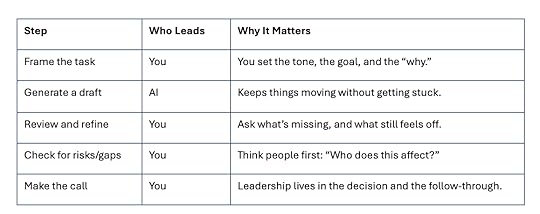
Power phrase to guide the team:
3 Real Ways to Use AI Without Losing Your Leadership“Let’s have AI give us a starting point—and then we’ll shape it into something we’d say.”
You don’t need a fancy rollout. Start small. Start now.
1. Prep Fast for Deeper ConversationsUse AI to summarize reports, customer feedback, or long meetings so you can spend energy on what matters.
Try this:
2. Stretch Your Thinking, Not Your Time“Give me three insights from this doc so I’m ready to talk strategy.”
You’ve got a decent idea—ask AI to help you expand it. Just don’t stop at its first suggestion.
Try this:
“What’s a fresh angle we could try for this message?”
Then bring it back to the team and ask:
3. Sense the Human Ripple Effect“What would make this sound more like us?”
Use AI to stress-test your thinking—but you still need to bring the empathy.
Try this:
“If we roll this out tomorrow, who might be confused, frustrated, or left out?”
That question right there? It’s leadership.
Quick Coaching Questions to Bring Your Team AlongWhether you’re the one prompting AI or helping your team explore it, these questions keep things grounded and real:
“What part of this work is better with AI—and what still needs us?”
“How do we keep our message aligned with our values?”
“What could go sideways if we just copy-paste this output?”
“Where might this speed up our work—and where might it disconnect us?”
You don’t have to be an AI expert.
You need to stay curious, connected, and clear.
AI can be amazing and take you in the wrong direction if you’re not paying attention.
Here’s what to look out for:
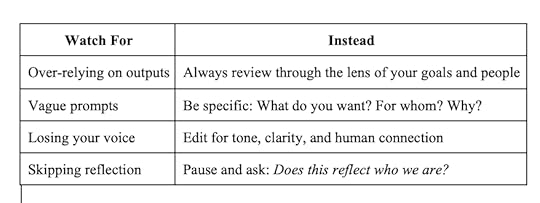
Collaborating with AI isn’t about doing more with fewer people.
It’s about doing the right work faster, together.
You bring the values.
>You bring the clarity.
>You build the trust.
AI can help with the lift, but you still lead the way.
And the best part? Your team will follow your lead when you model mindful collaboration with AI.
The post How to Collaborate with AI (and keep your job, voice and sanity) appeared first on Let's Grow Leaders.
May 30, 2025
Poor Communication Skills that Destroy Trust and Teamwork
Episode 305: Have you ever wondered if the way you communicate as a leader could destroy trust with your team? Even well-meaning leaders unintentionally send the wrong message through avoidable communication missteps—and when trust slips, so does performance, engagement, and morale. This episode is your radar check: a chance to spot the subtle mistakes that may be holding your leadership back and start making the small shifts that lead to powerful change. By tuning in, you’ll discover:
The seven most common communication habits that destroy trust—and how to fix them.Simple, actionable tools like “scheduling the finish” and “responding with regard” to immediately boost clarity and follow-through.Powerful listening and feedback strategies that help your team feel heard, valued, and motivated to perform at their best.Listen now to catch the trust-busting mistakes you might be missing—and learn exactly how to turn them into connection, clarity, and credibility.
7 Trust-Busting Mistakes Leaders Make (and How to Avoid Them)00:57 – Communication Radar: Your Trust Check-Up
David introduces the concept of a leadership “communication radar” to help you identify if your words and habits are quietly eroding team trust.
02:13 – Avoiding Difficult Conversations
Avoidance sends a message that people or problems don’t matter. That silence doesn’t just delay progress—it actively destroys trust by creating anxiety and resentment.
03:13 – Vague and Indirect Language
Being unclear forces your team to guess, which erodes confidence and productivity. Lack of clarity can slowly destroy trust, even if your intentions are good.
05:18 – Failing to Listen with Curiosity
Interrupting, dismissing, or assuming you know what someone means can make them feel invisible. Failing to truly listen is another way leaders destroy trust without realizing it.
07:44 – Breaking Commitments and Reliability Gaps
Not following through—no matter how well-meaning—signals unreliability. When your actions don’t match your words, you risk destroying trust in your leadership.
11:44 – Focusing Only on the Task
When people feel reduced to “just doing the work,” their motivation and sense of value tank. Ignoring their humanity can destroy trust and damage morale.
14:09 – Critical Feedback Without Encouragement
If your feedback only points out flaws, people disengage or retreat. Encouragement isn’t fluff—it’s essential fuel. Skipping it is a quick way to destroy trust over time.
15:59 – Making Encouragement Meaningful
You’ll hear specific, thoughtful ways to offer praise based on who your team members are—so your words actually land and stick.
17:41 – Moving Too Fast and Missing Contributions
Rushing to solutions can cause you to steamroll ideas and silence quieter voices. This oversight doesn’t just limit innovation—it can also destroy trust by making people feel irrelevant.
19:30 – Responding With Regard: A 3-Step Fix
David outlines a graceful way to acknowledge input, add useful context, and invite continued contribution—so your team stays engaged and respected, even if the idea can’t move forward.
The post Poor Communication Skills that Destroy Trust and Teamwork appeared first on Let's Grow Leaders.
May 29, 2025
Pump Up the Praise: Fun Employee Appreciation on a Budget
So you’re bringing your team together and want to include a bit of employee appreciation. Maybe it’s been a while. You want to start strong—good energy, some connection, perhaps even a little fun. And you definitely want to recognize the great stuff your team has been doing.
But your budget? It’s the kind of budget that says, “What if we just clap enthusiastically?”
No worries. You can still make people feel seen, valued, and excited—without spending a ton (or really much at all).
Here’s one of my favorite low-cost, high-impact ways to appreciate your team:
Balloons.Yep. Balloons.
Employee Appreciation That Pops (Literally): An Easy Employee Appreciation Exercise (With Video)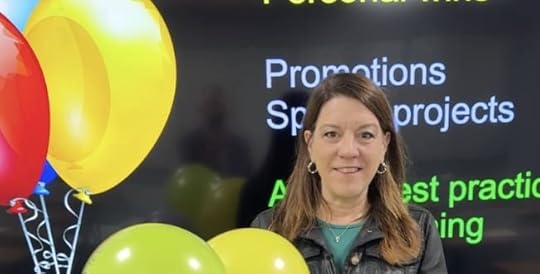
Watch this video to see this employee appreciation teambuilder in action
Here’s how it goes:
Pick a few categories. Think: “Big wins,” “Best practices,” “New learnings,” “Promotions,” “Above-and-beyond moments”—whatever fits your team right now.Color-code some balloons. For example, green = learnings, red = celebrations, blue = cool new ideas.Blow them up. (Yes, the balloons. Not your to-do list.)Let people choose. Invite your team to pick a balloon that represents something they want to share or celebrate.Give them 10 minutes to wander and talk. No formal speeches. Just natural conversations—“Hey, what’s your balloon for?” Let the recognition spread around the room.That’s it. Easy setup. Big return.
Why This WorksPeople love to share their wins—but they don’t always get the chance. This gives them the moment. It’s fun, colorful, and just a little silly in the best way.
And it brings people together. They hear each other’s stories. Learn something new. And, cheer each other on.
In short: it creates energy, connection, and pride—without needing a line item in your budget.
Q1: What are some other playful ways to celebrate team wins when money is tight?So glad you asked. Here are a few tried-and-true favorites:
“Sticky Note Shoutouts” – Keep a stack of Post-its handy. Write quick, specific thank-yous and stick them on desks, laptops, or virtual whiteboards.
“Pass the Praise” – Start a meeting with one person recognizing someone else. That person then picks someone new to shout out next time. (It snowballs.)
“Mini Mic Moments” – Give someone 60 seconds to share a recent win at the start of a meeting. Make it fun, make it fast, make it a habit.
Create a “Wins Wall” – In the office? Use a whiteboard or wall space. Virtual? Try a shared doc or Slack channel. Let the team post shoutouts, wins, and thank-yous.
Recognition doesn’t need confetti cannons (though those are cool too). It just needs a moment—and a little intention.
Q2: How can I adapt this balloon idea for a remote or hybrid team?We’ve got you. No helium required.
Use emojis instead of balloons. Send out a list of “celebration categories” tied to emojis. (🎯 = big win, 🌱 = new learning, 💡 = idea shared, etc.)
Virtual Breakouts: Have folks pick their emoji and go into small groups to share their story. Ten minutes, just like in-person.
Jamboard or Miro board: Create a digital canvas with “balloon” shapes or sticky notes for people to click, drag, and write in.
Bonus twist: Ask folks to spotlight a teammate when they pick their emoji. Peer-to-peer recognition = double the impact.
Employee Appreciation Doesn’t Have to Be FancyWe’ve seen this over and over again with the teams we work with: the most powerful recognition is specific, sincere, and shared.
It doesn’t need to be perfect. Or polished. Or pricey.
It just needs to be real.
So if you’re looking for a fun, fast way to celebrate your team without breaking the bank…
Bring the balloons.
See Also: How to Make Better, Employee Recognition a Daily Habit
Kickoff the new year with this epic teambuilding activity
The post Pump Up the Praise: Fun Employee Appreciation on a Budget appeared first on Let's Grow Leaders.
May 27, 2025
Ready to Bust Through Silos? It’s Time for Force Field Analysis
You know that feeling when teams are technically on the same side but act like competitors? Like you’re all rowing the same boat—but in opposite directions? That’s silo thinking at work. If you’re ready to shift from frustration to collaboration, force field analysis is one of the simplest, most effective tools you can use to break down silos and start making real progress—fast.
It sounds a little Star Wars-y, it it’s actually one of the most effective, grounding tools we use to help teams—especially teams in tension—work through what’s holding them back.
Originally created by Kurt Lewin in the 1950s (a social psychologist decades ahead of his time), Force Field Analysis is change management gold. You define the current state, envision a better one, and then identify the forces pushing you forward—and the ones pulling you back. Then? You make a plan to shift the balance.
Why Force Field Analysis is a Game Changer Across TeamsForce Field Analysis works to discuss tensions and break down silos and within teams, sure. But where it really shines? Across them. Think sales and customer service. Ops and IT. Product and marketing. Or that matrixed environment where everyone’s dotted-line to someone and no one’s quite sure who owns what.
You bring a few humans from each siloed group into a room (or Zoom), and suddenly things start to shift. You get:
Shared understanding of the tension.
Insight into what matters to them.
And—this is big—mutual accountability for making things better.
If you’ve ever said, “I just wish they understood where we’re coming from,” this technique is for you.
How to Use Force Field Analyis to Break Down Silos (Step-by-Step)1. Define the ProblemPick a clear, shared challenge. Something like:
“We don’t collaborate well between sales and customer service.”
Then describe your ideal state:
2. Identify the Driving Forces“We’d share insights regularly and work as one customer-facing team.”
What’s already helping move things forward?
Examples:
“We all want what’s best for the customer.”
“Some people already collaborate well.”
“There’s energy to make this better.”
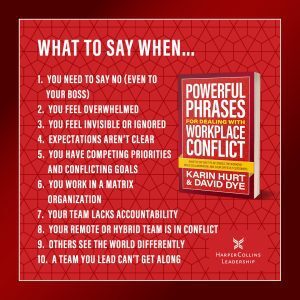
Click here for FREE Sample Chapters
3. Identify the Restraining ForcesWhat’s getting in the way?
This is where the good stuff comes up. Put the fish on the table and talk about it.
Examples:
“We’re working toward different metrics.”
“We assume the worst about each other’s motives.”
“We don’t meet unless there’s a fire.”
4. PrioritizeOnce you’ve got both lists, ask:
Which forces have the most weight?
What’s really blocking us?
What are we under-leveraging?
Maybe it’s the misaligned goals. Or lack of face time. Maybe it’s an old story one team’s been telling itself about the other.
5. Choose Where to StartYou don’t have to solve everything. Pick one core force—positive or negative—to work on.
6. Build an Action PlanAsk:
“How can we strengthen this driving force?”
“What’s one habit we can do to reduce this barrier?”
Keep it practical. Assign ownership. And set a time to check back in.
Example:
Barrier: “We don’t understand each other’s goals.”
Action: “Each team presents their success metrics and priorities in our next joint meeting.”
Schedule the finish. Put a time on the calendar to talk about how it’s going. Celebrate wins. Hold one another accountabile. Tweak the plan.
A Quick Video on How to Conduct a Force Field Analysis

Mix your groups. Bring 2–3 people from each silo. Keep it under 12 total. Small enough to be real, large enough to see patterns.
Set the tone. This isn’t about blame. It’s about surfacing what’s real so you can do something about it.
Bring empathy and curiosity. Two ingredients that melt silo walls faster than anything.
Final ThoughtWhether you’re leading a team, navigating a matrixed org, or trying to fix the friction between departments, you can’t break down silos unless you name what’s holding them up.
Force Field Analysis gives you a simple, powerful way to do just that. It’s not a magic wand—but it is a lightsaber of a tool.
So next time you’re stuck in a cross-functional standoff or dealing with another case of “us vs. them,” pause. Bring the team together. Map the forces. And shift them—intentionally, together.
Let the force (field) be with you.
The post Ready to Bust Through Silos? It’s Time for Force Field Analysis appeared first on Let's Grow Leaders.
May 26, 2025
Leadership Habits That Stick: How Mini Experiments Create Big Change
You’ve been to the leadership training, read the books (maybe even a few by us—awesome). Heard the stories, shared yours, and left inspired and ready to be a better human-centered leader. We see it again and again– great leaders want to keep getting better.
But even the most inspiring leadership lessons can get lost in the whirlwind of real life. That’s where Mini-Personal Experiments come in.
A Mini-Personal Experiment is a simple, 30-day challenge designed to help you turn great leadership insights into consistent leadership habits. It’s one of the many ways we help leaders not just learn — but transform following our leadership programs and keynotes.
Think of it like a leadership lab. No grand strategy, no year-long commitment. Just 30 days to test one new leadership habit and see what happens. It’s a small, focused way to build on what you’ve learned and actually see results.
What’s a Mini-Personal Experiment?A Mini-Personal Experiment is a low-risk, high-impact way to strengthen your leadership habits. It’s how you move from “That’s a great idea” to “I’m doing it.”
But for it to work, it needs to meet three simple criteria:
Simple: It’s one clear action, not a 37-step plan.Uncomfortable: If it doesn’t make you a little nervous, it’s too easy.Measurable: You can count it, track it, or see the results.We use these in our leadership programs because they work. They help leaders take great ideas and immediately put them into practice. And because they’re only 30 days, they’re easy to start and stick with.
Want to try one for yourself? Here are some of our favorite mini-personal experiments for key leadership habits.
Mini-Personal Experiments for Key Leadership Habits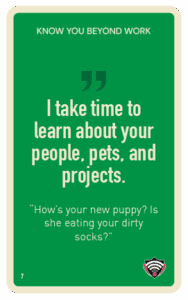 1. Know You Beyond Work (Connection Habit)
1. Know You Beyond Work (Connection Habit)You know that your team members have lives outside of work, but do you know much about those lives? Let’s fix that.
Mini-Personal Experiment: Have three non-work-related conversations with members of your team each day. Could be about their weekend, their pets, or that show they love and you’ve never heard of.
How to Measure: Count your conversations. Notice who opens up. See if people share more ideas because they feel safer with you.
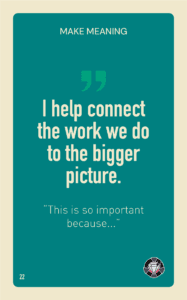 3. Make Meaning (Clarity Habit)
3. Make Meaning (Clarity Habit)Your team needs to know why their work matters — and they’re looking to you for that answer.
Mini-Personal Experiment: At the start of each team meeting, share one way today’s work connects to the bigger mission.
How to Measure: Track team reactions. Do they seem more engaged? Do they start making those connections themselves?
4. Challenge Assumptions (Curiosity Habit)
You’ve got smart people on your team. Make sure their ideas aren’t hiding behind your assumptions. 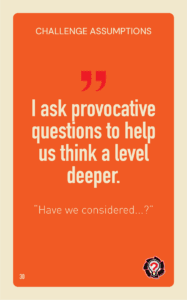
Mini-Personal Experiment: In every meeting, ask at least one “What if…?” or “How might we…?” question.
How to Measure: Count your questions. Watch for the new ideas that follow. (Spoiler: There will be more.)
5. Say No for a Bigger Yes (Commitment Habit)
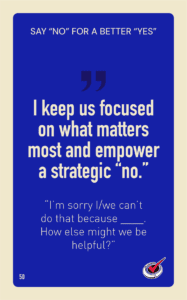 You can’t do it all. Neither can your team. But you can focus on what matters most.
You can’t do it all. Neither can your team. But you can focus on what matters most.
Mini-Personal Experiment: Say “no” to one request each day that doesn’t align with your team’s priorities.
How to Measure: Track your “no’s.” Notice how much more you and your team get done — and how much less you feel like you’re drowning.
How to Build Leadership Habits with Mini-Personal ExperimentsPick One Habit: Choose a leadership behavior you want to get better at.
Define Your Action: Make it small, clear, and slightly uncomfortable.
Track It: Write down when you do it and any reactions or results.
Reflect: After 30 days, ask yourself: What changed? What did you learn?
Repeat: If it worked, keep going. If it didn’t, tweak it and try again.
Why This Works (and Why It’s One of Our Favorite Tools)We’ve seen it firsthand — in our keynotes, leadership training programs, and coaching. Great leadership isn’t just about knowing what to do — it’s about consistently doing it.
That’s why our programs don’t just inspire leaders — they equip them. We share powerful insights, practical tools, and real-world strategies. And for leaders who want to take it even further, we offer Mini-Personal Experiments — a simple, powerful way to turn ideas into action.
Because it’s one thing to learn about the power of asking for feedback — it’s another to actually do it every day for a month. (Note: If you missed our interview with Mashall Goldsmith on changing behavior you can do that here).
It’s one thing to know that connection matters — it’s another to build it through daily, meaningful conversations.
So what will your first mini-personal experiment be? Will you ask for more feedback? Say no to one distraction a day? Actually learn the names of your team’s pets?
Whatever it is, you’re just 30 days away from being an even better leader. Ready, set, experiment.
Want to Take This Further? Join Us for a Leadership ProgramAt Let’s Grow Leaders, we don’t just teach leadership habits — we help you live them. Our programs are designed to turn big ideas into lasting change. Ready to bring this to your team? Let’s talk.
The post Leadership Habits That Stick: How Mini Experiments Create Big Change appeared first on Let's Grow Leaders.
May 23, 2025
How Great Leaders Escalate Accountability to Get Everyone the Feedback They Need
What do great leaders do when a team member says they’ll change… but nothing changes?
You’ve had the first accountability talk. Maybe even a second. And still—you’re stuck in a frustrating loop, repeating yourself while performance stalls. This episode is your next step. Learn how to confidently navigate those tough follow-up conversations without sounding like a broken record—or burning bridges. Here’s what you’ll walk away with:
A practical 3-step model (A.R.T.) to escalate accountability conversations while preserving trust and connection.
Exact language to use when behavior doesn’t change—even after promises have been made.
A clearer path forward, whether it’s coaching improvement or helping someone realize they’re not in the right role.
Hit play now to master the next-level skills that make sure your people follow through—without you losing your soul (or your patience).
For Great Leaders, Why One Conversation Isn’t Always Enough[00:00] – Setting the Stage
David Dye opens the episode by addressing a common leadership challenge: what to do when a single accountability conversation doesn’t lead to change. This episode builds on part one and introduces an escalation model for real-world leadership.
[01:48] – The Human Side of Accountability
Great leaders understand that everyone sometimes needs more than one reminder. David emphasizes that needing a second—or even third—conversation is a normal part of human behavior, not a sign of failure.
[02:43] – The ART of Advanced Accountability
Enter the ART model: Action, Repetition, Trust. Each stage offers a way for leaders to raise the stakes without damaging relationships. The goal? Drive results while showing respect and care.
[04:45] – Spotting Repetition, Building Awareness
When a team member repeats a behavior, great leaders shift the conversation. David shows how to name the pattern and offer specific examples to spark honest reflection.
[07:24] – Turning Insight Into Commitment
Use powerful language like “Is that a promise you can make?” to invite real ownership. These words help team members pause and consider their role, making the commitment more meaningful.
[08:21] – From Behavior to Broken Trust
When someone breaks a commitment, the conversation becomes about trust. David shares how great leaders speak directly but with empathy to encourage accountability without triggering defensiveness.
[09:32] – The Power of Disappointment Over Anger
David explains why approaching with concern—not frustration—leads to better outcomes. A disappointed tone helps team members self-reflect rather than shut down.
[10:57] – Three Outcomes of the Trust Conversation
After the trust-level talk, people either turn the corner, opt out of the role, or continue the pattern. Regardless of the outcome, great leaders guide the process with clarity and compassion.
[12:38] – The Role of Documentation & HR
As accountability conversations escalate, documentation becomes critical. Leaders must work with HR partners to align on policies, ensure fairness, and protect all parties involved.
[14:12] – Why Great Leaders Embrace Escalation
Escalating accountability isn’t punishment—it’s how great leaders show respect for the team. Done right, it builds trust, sets clear standards, and helps every person on the team grow.
The post How Great Leaders Escalate Accountability to Get Everyone the Feedback They Need appeared first on Let's Grow Leaders.
May 19, 2025
How to Foster Psychological Safety in Training (and Build a Courageous Learning Culture)
Imagine this: you kick off a training session with a question, and you’re met with hesitant silence. It’s not that your learners have nothing to say – it’s that they don’t feel safe saying it. As a human-centered L&D leader, your first job is to create psychological safety in every training room.
Psychological safety means people speak up with ideas, admit mistakes, or discuss what’s on their minds. In a psychologically safe training environment, participants know it’s okay to “speak truth to power,” ask questions, or share wild ideas. And, when that safety is present, the whole group benefits: research shows it nurtures an environment of open feedback and creative idea-sharing. In short, if you want an engaged, courageous learning culture, psychological safety is the foundation.
Why does this matter so much for learning? Learning is inherently risky – it involves trying new skills, asking questions, and sometimes looking foolish before you get it right. If learners fear being judged or “saying the wrong thing,” they’ll shut down. On the other hand, when people feel safe, they engage. Recent research, including the 2024 APA Work in America Survey, found that employees experiencing psychological safety report higher job satisfaction, better performance, and lower turnover intentions. Google’s Project Aristotle also found that psychological safety was the most important factor in team effectiveness.
Courageous Cultures: Encouraging Every Voice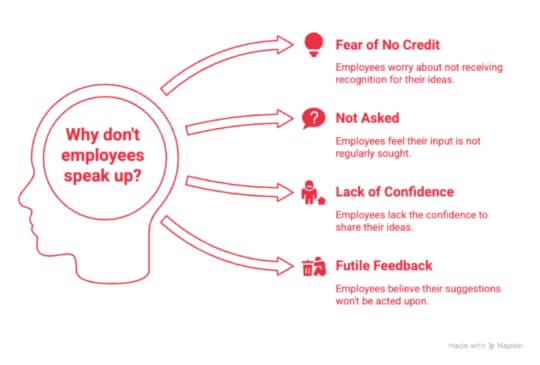
Source: Courageous Cultures, Karin Hurt and David Dye
So how do we get people to speak up and contribute? That’s exactly what we explored in our book, Courageous Cultures. A Courageous Culture is one where people speak up, share ideas, and contribute as “micro-innovators” every day. In our research with the University of Northern Colorado, we uncovered why employees often stay silent – and it’s rarely because they have nothing to add.
Fear of no credit or recognition: 56% of employees believed if they offered an idea, they wouldn’t get credit for it.Nobody’s asking: 49% said they’re simply not asked for their input regularly.Lack of confidence: 40% admitted they don’t feel confident enough to share their ideas.“Why bother?” feedback loop: 50% felt that nothing would happen with their suggestion even if they spoke up.Leadership resistance: 67% felt their bosses “don’t really want new ideas.”Our Courageous Cultures framework emphasizes that leaders must consistently invite and reward voice. In fact, psychological safety and courage go hand in hand. Harvard professor Dr. Amy Edmondson, the pioneer of psychological safety (who also wrote the foreword to Courageous Cultures) describes psychological safety and employee courage as “two sides of the same… coin.” In her book The Fearless Organization, she focuses specifically on how leaders can foster psychological safety to drive learning, innovation, and growth.
How Psychological Safety Sparks Engagement, Collaboration, and Bold Ideas
When people feel safe, they’ll venture beyond their comfort zones. Edmondson’s research shows that teams with high psychological safety are more likely to communicate openly, admit errors, ask for help, and experiment. A 2024 Boston Consulting Group (BCG) report also found that psychological safety plays a critical role in improving retention, especially among women, people of color, and other underrepresented groups.
Benefits you can expect:
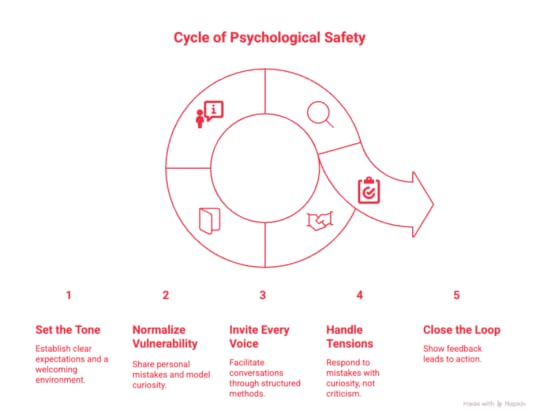
©Hurt and Dye, 2025. info@letsgrowleaders.com
Courageous conversations: People ask important questions they might consider “dumb” and raise difficult topics.Better collaboration and inclusion: More diverse perspectives come forward.More risk-taking and innovation: Safe spaces encourage trying new ideas without fear of punishment.Here are some practical ways to build psychological safety:
Set the tone early: Start with clear expectations and a welcoming environment.Make it okay to be vulnerable: Share your own mistakes and model curiosity.Invite contribution Use structured methods like small group discussions and tactile learning that facilitate easier conversationsRespond with regard: Respond to mistakes and disagreements with curiosity, not criticism.Close the loop: Show participants their feedback and ideas lead to action.The Power of Tactile, Interactive Learning Activities
Interactive, tactile activities like our SynergyStack® card deck system make it easier for learners to engage with important topics. They provide physical prompts that lower social risk and get everyone participating. Instead of staring into space wondering what to say, participants can respond to a card’s clear, structured prompt — making conversations more natural and less intimidating.
Recent research shows that tactile experiences make training better.
A 2020 study in the Journal of Applied Cognitive Psychology found that when people use multiple senses, including touch, learning outcomes improve. (Applied Cognitive Psychology, 2020)A 2022 study in the International Journal of Training and Development showed that “serious play” and tactile learning activities reduce social anxiety and encourage open idea generation among adult learners. (IJTD, 2022)And, research published in Frontiers in Psychology (2021) found that external prompts like cards or physical tools make it feel safer to engage. Frontiers in Psychology, 2021)Tactile tools create psychological safety in training by: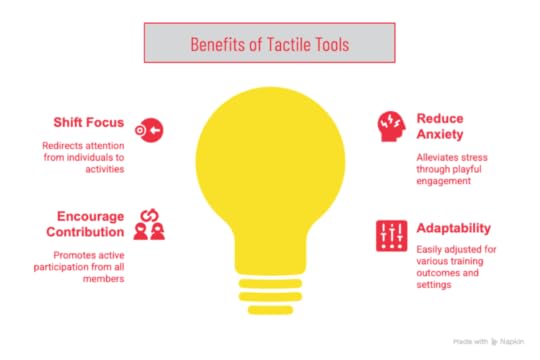
Hands-on methods also boost retention and motivation, particularly in adult learning environments.
Bringing It All Together: Coach Your Culture to Courage
Interactive, tactile activities like our SynergyStack® Team Development System make it easier for learners to engage with important topics. They provide physical prompts that lower social risk and get everyone participating. Instead of wondering what to say, participants can respond to a card’s clearly defined habits, definitions, and phrases — making conversations more natural and less intimidating.
Through your design choices, facilitation skills, and creative activities, you can cultivate a room full of courageous communicators. Your training can be the catalyst that sparks a ripple effect, building a Courageous Culture one conversation at a time.
The post How to Foster Psychological Safety in Training (and Build a Courageous Learning Culture) appeared first on Let's Grow Leaders.
May 16, 2025
The Four Accountability Feedback Skills Every Leader Must Master
Episode 303: Are your accountability feedback conversations falling flat—or worse, backfiring—because you’re not sure what to say?
If you’ve ever avoided giving tough feedback or struggled to hold someone accountable without damaging the relationship, you’re not alone. This episode unpacks why most accountability issues stem not from performance—but from a lack of clarity—and how to fix that with confidence and compassion. It’s all about creating a workplace where expectations are clear, growth is encouraged, and everyone knows where they stand.
Here’s what you’ll walk away with:
A 4-word phrase that simplifies even the hardest accountability conversations.A powerful framework—clarity, connection, curiosity, commitment—that helps you get results and build trust.The exact steps and phrases to use so your team knows you care and that you mean business.Play this episode now and learn how to handle accountability conversations like the kind of leader everyone wants to work with.
Foundations of Effective Accountability Feedback Conversations00:00 – 00:55
David introduces the episode by promising a practical, four-word approach to accountability feedback that reduces stress and elevates team performance. This approach will help you build a reputation as a leader who truly cares.
02:06 – 02:59
You’ll hear how most “performance issues” are actually clarity issues. David explains how magical thinking (“they should already know”) sabotages effective leadership and how clear expectations are the cornerstone of accountability feedback.
03:57 – 04:56
He shares simple tools for checking understanding before a problem arises. This section makes the case that one conversation about expectations can prevent 14 frustrating follow-ups.
04:56 – 06:42
The conversation moves into connection. David describes how to start accountability feedback by connecting to your intent, your compassion for the person, and the observable facts—not assumptions or labels.
07:33 – 09:11
This part highlights the critical mistake of labeling attitudes and offers a better path: describe behavior as if you were narrating a video. This grounds your feedback in objectivity and avoids defensiveness.
10:12 – 12:04
The episode shifts into curiosity—the secret ingredient of real conversations. David shares how asking open-ended questions about the employee’s perspective builds ownership and deepens trust in accountability feedback.
12:04 – 12:49
Learn how to invite the other person to propose solutions. You’ll hear how this approach transforms the dynamic from correction to collaboration, motivating people to follow through.
13:43 – 14:26
This timestamp covers the review step. David explains how checking for understanding ensures everyone leaves the conversation with the same takeaway. And why it’s crucial to repeat what success looks like.
14:26 – 15:24
Scheduling the finish is the most commonly missed yet vital part of accountability feedback. David explains how this step holds people accountable while creating space for recognition—or escalation if needed.
16:52 – End
David recaps the full Inspire Method—Initiate, Notice, Support, Probe, Invite, Review, Enforce—and reinforces that consistently using these steps can make you the kind of leader people respect and remember.
The post The Four Accountability Feedback Skills Every Leader Must Master appeared first on Let's Grow Leaders.

